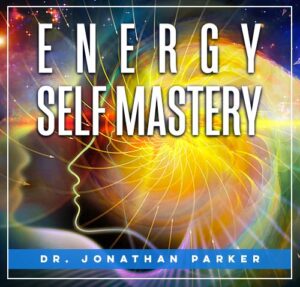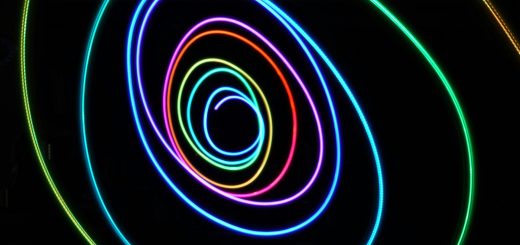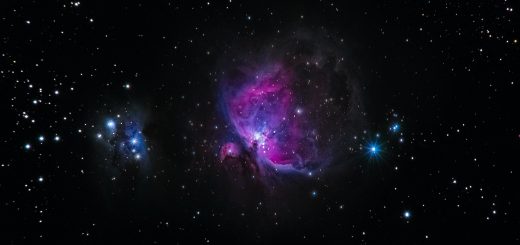The Relationship Between Energy And Time

Before diving in, please note: This post is for informational purposes only. If you’d like to know more about how we approach topics, feel free to check out our friendly Disclaimer Page.
Hey there, amazing readers! 🖐️ Just a quick note: yes, we know there are a lot of ads here. Trust us, we get it—it’s not the prettiest look, but they help us keep this blog alive and kicking. Those pesky little ads cover the costs of all the behind-the-scenes magic, from hosting and tech stuff to creating content we hope you’ll love.
We’re committed to delivering quality posts, and your support (even just sticking around despite the ads) means everything to us. So, bear with us, and thanks for helping us keep the good vibes rolling. Now, on to the fun stuff! 😉
TRANSLATE BUTTON AT THE END OF THE ARTICLE
A Quick Overview
The relationship between energy and time is both fascinating and essential for understanding the world around us.
From the way we consume energy in our daily lives to the fundamental laws of physics, these two concepts are deeply intertwined.
In this article, we’ll explore how energy and time shape our existence, influence our choices, and even spark our imaginations.
Let’s embark on this enlightening journey together!
Understanding Energy: The Essence of Our World
At its core, energy is the capacity to do work.
It’s what powers our homes, fuels our cars, and even keeps our bodies moving.
Think of energy as the lifeblood of the universe.
Without it, nothing would function.
Energy comes in many forms, including kinetic, potential, thermal, chemical, and nuclear.
Each type plays a role in our daily lives.
For example, when you eat food, your body converts the chemical energy into kinetic energy, enabling you to run or play.
The law of conservation of energy tells us that energy cannot be created or destroyed.
It can only change forms.
So, when I flick a switch and light up my living room, I’m not creating energy; I’m transforming electrical energy into light and heat.
In a broader sense, energy drives the universe.
Stars shine by converting nuclear energy into light, while plants harness solar energy to grow.
Everything around us is a manifestation of energy in various forms.
Understanding energy also encompasses its measurement.
The joule is the standard unit of energy in the International System of Units (SI).
It’s a small unit, but energy can also be measured in larger quantities, like kilowatt-hours for electricity.
In essence, energy is a fundamental concept that shapes our reality.
Without it, life as we know it would cease to exist.
What Is Time? A Journey Through Its Many Dimensions
Time is a curious concept.
We often perceive it as linear — past, present, and future.
But it’s more complex than that.
Time can feel elastic; some moments drag on, while others fly by.
Historically, humans have tried to measure time using sundials, clocks, and calendars.
The second, minute, hour, and year are all artificial constructs we’ve created to make sense of this intangible dimension.
Philosophers have long debated whether time exists independently or is merely a human invention.
Some argue that time is a constant, while others believe it’s relative and can bend based on speed and gravity, as suggested by Einstein’s theories.
In our daily lives, we often feel rushed.
Master your Energy and Awaken Your Spirit – start your journey here.
The demands of work, family, and social obligations can make it seem like there’s never enough time.
This perception can lead to stress and anxiety, often causing us to overlook the importance of being present.
Interestingly, time also has a biological aspect.
Our bodies have internal clocks, known as circadian rhythms, that dictate our sleep patterns and energy levels throughout the day.
In essence, time is a multifaceted dimension that governs our experiences, influencing everything from our personal schedules to the lifecycle of stars.
Energy and Time: Interconnected Concepts Explored
Energy and time are two sides of the same coin.
They constantly interact, shaping our experiences and the physical universe.
When we think about energy transfer, time is a critical factor.
For instance, how long does it take to charge my phone?
The power of the charger, combined with the duration of charging, determines how much energy the battery receives.
In physics, we often discuss energy in terms of its rate of change over time.
For example, power measures how quickly energy is used or transferred.
A higher power rating means more energy is consumed in a shorter amount of time.
Moreover, our daily lives are filled with energy transactions, whether it’s cooking a meal, running a car, or heating our homes.
Every action we take involves the transfer of energy over time.
There’s also a philosophical aspect to their relationship.
How do we perceive time when we’re engaged in activities that require significant energy?
Think about a long hike or a marathon.
The energy expended often makes time feel elongated.
Ultimately, our understanding of energy is framed by the time it takes to transfer, transform, or utilize it.
Without time, energy would be a static concept rather than the dynamic force that drives our lives.
How Energy Flows Through Time in Everyday Life
Energy flows through time in our daily activities in interesting ways.
When I wake up and brew my morning coffee, I set off a chain of energy transformations.
The electrical energy heats the water, which then extracts flavor from the coffee grounds, all happening within a specific timeframe.
Consider cooking as another example.
The energy from the stove heats the pan, and over time, this energy cooks the food.
If I don’t give it enough time, my meal might be undercooked — a lesson I learned the hard way!
In transportation, energy flows in a linear fashion.
A car engine converts fuel into kinetic energy, propelling the vehicle forward.
The longer I drive, the more fuel I consume.
This relationship illustrates how energy use is continuously linked to time.
Another everyday illustration is our reliance on electricity.
When I pay my utility bill, I’m essentially compensating for the energy consumed over a month’s time.
The energy flow is measured in kilowatt-hours, representing the amount of energy used and the time it took to use it.
We also encounter energy flow in our bodies.
As I engage in physical activities, my body converts stored energy into kinetic energy.
The duration of my workout plays a critical role in determining how much energy I expend.
In summary, energy and time are intricately linked in our daily lives, constantly shaping our experiences and actions.
The Physics of Time: Energy Transformation Explained
In the realm of physics, time is vital for understanding energy transformation.
The first law of thermodynamics, for instance, states that energy cannot be created or destroyed, only transformed from one form to another.
This transformation is often time-dependent.
Take a lightbulb, for example.
When I switch it on, electrical energy flows through the filament.
Over time, this energy generates heat, causing the filament to glow and emit light.
The entire process occurs within seconds, illustrating the relationship between energy transformation and time.
In more advanced physics, concepts like entropy and the arrow of time come into play.
Entropy measures disorder within a system, and as energy transforms, entropy tends to increase.
This tendency toward greater disorder signifies the direction of time.
On a cosmic scale, energy transformations define the lifecycle of stars.
They spend millions of years converting hydrogen into helium through nuclear fusion.
Master your Energy and Awaken Your Spirit – start your journey here.
As they exhaust their fuel, they undergo dramatic changes, leading to phenomena like supernovae — a process that takes eons.
Moreover, time dilation, a consequence of Einstein’s theory of relativity, reveals how time can stretch or compress relative to energy and speed.
For example, a spaceship traveling close to the speed of light experiences time differently than someone standing still on Earth.
Physics teaches us that energy transformation is not just about the energy itself but also about the time it takes for those changes to occur.
This interplay shapes everything from everyday tasks to the vast universe.
Energy Levels: How They Change Over Time
Energy levels can change based on various factors and over time, affecting everything from our physical performance to the energy efficiency of our homes.
When I look at my energy levels throughout the day, they fluctuate dramatically.
In the morning, I usually feel energized after a good night’s sleep.
As the day progresses and fatigue sets in, I often reach for a snack or coffee to recharge.
This daily cycle showcases how personal energy levels change over time.
In the context of buildings, energy levels relate to energy efficiency.
A well-insulated home retains heat more effectively over time than a poorly insulated one.
This difference can significantly impact energy consumption and costs.
On a broader scale, energy levels in ecosystems also change with the seasons.
Photosynthesis in plants peaks during the summer, when sunlight is abundant.
However, as winter approaches, energy production declines, affecting the entire food chain.
In physics, atoms can exist in different energy states.
Electron transitions between these states occur over time, often induced by heat or light.
This phenomenon is crucial in fields such as chemistry and materials science.
The concept of energy levels extends to sports as well.
Athletes often go through training cycles where they peak at specific times, such as during competitions.
Their energy management and recovery strategies are critical for maximizing performance over time.
Overall, energy levels are dynamic and influenced by various factors.
Understanding these changes helps us manage our resources better, both personally and globally.
The Role of Time in Renewable Energy Sources
Renewable energy sources, such as solar, wind, and hydroelectric power, have a unique relationship with time.
The efficiency and viability of these energy forms often depend on temporal factors.
Take solar energy, for instance.
Solar panels generate electricity during daylight hours.
The amount of energy produced over time depends on the intensity of sunlight, which varies seasonally and geographically.
Wind energy faces similar challenges.
Wind patterns fluctuate, meaning energy generation can vary from day to day or season to season.
A wind farm may produce significant energy during a storm but yield little during a calm day.
Hydroelectric power relies on water flow, which can change over time due to weather patterns, such as rainfall and melting snow.
Managing these resources requires careful planning and monitoring to ensure a consistent supply.
Time also plays a role in energy storage.
With advancements in battery technology, we can store excess energy generated during peak production times for use later.
This capability allows us to optimize our energy consumption and reduce reliance on fossil fuels.
Interestingly, time influences public perception and policy regarding renewable energy.
As concerns about climate change grow, there’s a push for more sustainable energy sources.
Shifting public attitudes over time can lead to significant investments in renewable technologies.
Ultimately, time is a critical factor in the development, implementation, and efficiency of renewable energy sources.
How Energy Consumption Affects Our Time Management
Energy consumption significantly impacts how we manage our time.
From the appliances we use to our daily routines, energy choices can streamline or complicate our lives.
For example, using energy-efficient appliances can save time.
A dishwasher or washing machine that cleans effectively in less time allows me to focus on other tasks.
Choosing energy-efficient options can enhance productivity.
In contrast, inefficient energy use can lead to frustration.
If my old heater takes ages to warm up my home, I end up spending more time shivering or waiting for comfort.
This inefficiency can disrupt my schedule, forcing me to adjust my plans.
Moreover, energy consumption affects how we structure our days.
I often plan my meals around when I can use the oven or stovetop, factoring in peak energy rates.
These decisions reflect the time-energy balance that many of us navigate daily.
On a larger scale, businesses must consider energy costs when planning operations.
Companies that invest in energy-efficient solutions can save money, allowing them to allocate resources more effectively and improve productivity.
In essence, being mindful of energy consumption can lead to better time management.
By optimizing our energy use, we can free up valuable time for activities we genuinely enjoy.
Time Travel and Energy: What Science Fiction Teaches
Time travel has been a staple of science fiction for decades.
From "Back to the Future" to "Doctor Who," these narratives explore fascinating connections between energy and time.
In many stories, time travel requires immense energy.
The concept of a "flux capacitor" or "TARDIS" relies on theoretical physics principles.
The idea of traversing time often unleashes a torrent of energy that defies the laws we understand.
While these tales are fictional, they spark curiosity about the possibilities of time travel.
Some physicists joke that traveling at the speed of light might enable us to explore different time frames.
However, the energy required to reach such speeds is astronomical, making it a far-off dream.
Interestingly, science fiction often delves into the consequences of time travel.
Characters face paradoxical situations, altering timelines and causing unforeseen energy shifts.
These narratives highlight our understanding of causality and how interconnected energy and time truly are.
Even though we may not be able to hop in a time machine anytime soon, these stories remind us of the mysteries surrounding time and energy.
They encourage us to think creatively about the universe and challenge our understanding of reality.
The Impact of Technology on Energy and Time
Technology has dramatically reshaped how we interact with energy and time.
From smart appliances to renewable sources, advancements have simplified our lives.
I remember when I had to manually adjust the thermostat.
Now, I can program my smart thermostat to optimize energy use while ensuring my home is comfortable.
This technology saves energy and helps me manage time, allowing me to focus on other tasks.
Electric vehicles also illustrate how technology impacts energy and time.
They often come with fast-charging capabilities, allowing for quick top-ups.
I can charge my car while running errands, optimizing my time while using cleaner energy.
Moreover, technology enables real-time monitoring of energy consumption.
Smart meters provide data on my energy use, allowing me to make informed decisions.
This awareness helps me adjust my habits, saving energy and time.
In the workplace, technology transforms how businesses operate.
Automation helps streamline processes, reducing energy consumption and increasing efficiency.
Employees can focus on higher-value tasks, ultimately saving time.
While technology brings numerous benefits, it also poses challenges.
Our increased reliance on gadgets can lead to distractions, consuming time and energy.
Finding balance in this tech-centric world is essential for maintaining productivity.
Overall, technology plays a pivotal role in shaping our relationship with energy and time, enhancing our lives and introducing new challenges.
Mindfulness: Balancing Energy and Time in Life
In our fast-paced world, finding balance between energy and time is crucial.
Practicing mindfulness can help us become more aware of our energy levels and how we utilize our time.
I often find myself caught in a whirlwind of tasks, feeling overwhelmed.
Taking a step back to breathe and reflect helps me regain focus.
Mindfulness encourages me to prioritize what truly matters and allocate my energy accordingly.
Incorporating mindfulness into daily routines can be transformative.
Instead of mindlessly scrolling through my phone, I can dedicate that time to reading a book or enjoying nature.
This shift enhances my energy and enriches my life.
Moreover, mindfulness can inform our energy consumption choices.
By being intentional about how and when we use energy, we can reduce waste.
For example, switching off lights when leaving a room is a small yet effective way to save energy.
Mindfulness also promotes self-care.
Recognizing when I need rest or a break can improve productivity and energy levels.
Balancing work and personal life is essential for long-term sustainability.
Incorporating mindfulness into our lives fosters a deeper connection with energy and time, ultimately enriching our experiences and well-being.
Conclusion: Embracing the Harmony of Energy and Time
The relationship between energy and time is profound and multi-faceted.
From the simplest tasks in our daily lives to the grand workings of the universe, these two concepts govern our reality.
By understanding how they interact, we can make better choices, optimize our energy consumption, and enhance our time management.
Whether it’s through technology, mindfulness, or simply being more aware, embracing this harmony can lead to a more fulfilling life.
As we navigate the complexities of modern living, let’s remember that every choice we make regarding energy impacts our time and vice versa.
Together, these forces shape our experiences, inviting us to appreciate the delicate balance that sustains us.
So, let’s celebrate this intricate dance between energy and time, making conscious decisions that enrich our lives and those around us.
Here’s to a brighter, more mindful future!

The Enlightenment Journey is a remarkable collection of writings authored by a distinguished group of experts in the fields of spirituality, new age, and esoteric knowledge.
This anthology features a diverse assembly of well-experienced authors who bring their profound insights and credible perspectives to the forefront.
Each contributor possesses a wealth of knowledge and wisdom, making them authorities in their respective domains.
Together, they offer readers a transformative journey into the realms of spiritual growth, self-discovery, and esoteric enlightenment.
The Enlightenment Journey is a testament to the collective expertise of these luminaries, providing readers with a rich tapestry of ideas and information to illuminate their spiritual path.
Our Diverse Expertise 🌟
While our primary focus is on spirituality and esotericism, we are equally passionate about exploring a wide range of other topics and niches 🌍📚. Our experienced team is dedicated to delivering high-quality, informative content across various subjects ✨.
To ensure we provide the most accurate and valuable insights, we collaborate with trusted experts in their respective domains 🧑🏫👩🏫. This allows us to offer well-rounded perspectives and knowledge to our readers.
Our blog originally focused on spirituality and metaphysics, but we’ve since expanded to cover a wide range of niches. Don’t worry—we continue to publish a lot of articles on spirituality! Frequently visit our blog to explore our diverse content and stay tuned for more insightful reads.








